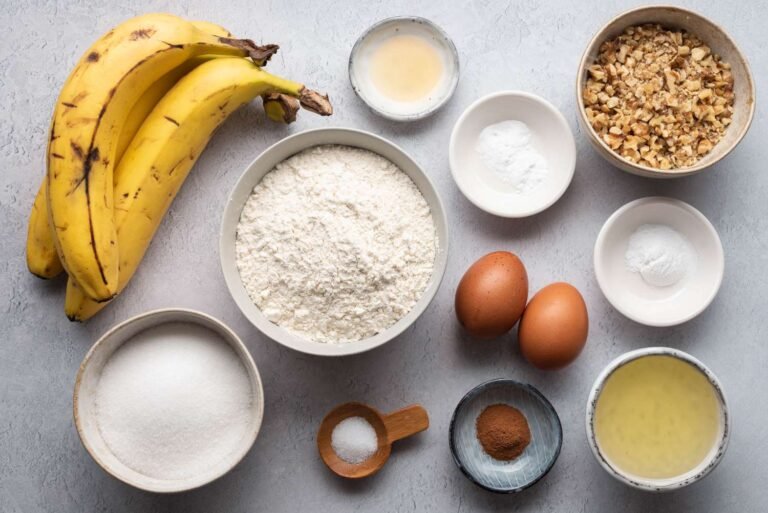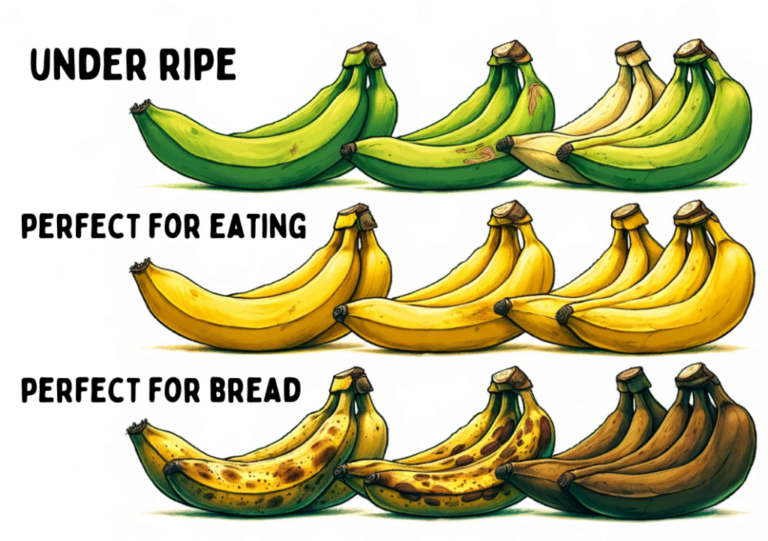How to Choose the Right Baking Pan for Banana Bread?
Choosing the right baking pan can make all the difference in achieving the perfect banana bread. Whether you prefer a classic loaf or something with a creative twist, understanding how your choice of pan impacts the final product is key. In this article, we’ll explore how different pans affect the texture, flavor, and overall success of your banana bread. Plus, we’ll offer tips for ensuring your next loaf turns out just the way you like it.
Why the Right Baking Pan Matters?
When baking banana bread, the type of pan you use plays a critical role in determining the texture and appearance of your loaf. The pan influences how evenly the bread bakes, how well it rises, and even how moist it turns out. An ill-suited pan can lead to undercooked centers, overbaked edges, or an unevenly risen loaf, which can be frustrating after putting effort into the perfect batter.
Selecting the ideal pan depends on several factors, including the material, size, and shape. Each of these elements can alter your banana bread in subtle ways, so let’s break down what you need to consider when choosing the perfect pan.
Material: Metal, Glass, or Silicone?
The material of your baking pan is the first factor to consider, as it directly affects the baking time and the crust of your banana bread.
- Metal Pans: Metal pans, particularly aluminum or steel, are excellent conductors of heat. They provide even heating, which helps your banana bread bake uniformly. If you’re aiming for a loaf with a golden-brown crust, a metal pan is your best bet. For those following a healthy recipe, such as Healthy Banana Bread: Delicious Recipes with a Nutritional Twist, a metal pan can help achieve that perfectly crisp exterior while keeping the inside moist.
- Glass Pans: Glass pans distribute heat more slowly than metal pans, which can result in a longer baking time. However, they retain heat well, meaning your banana bread will continue to cook even after being removed from the oven. This can be beneficial for recipes that require thorough baking, like How to Make Vegan Banana Bread That’s Moist and Flavorful?, where the moisture content is higher.
- Silicone Pans: Silicone pans are non-stick and flexible, making them easy to use and clean. However, they don’t conduct heat as well as metal or glass, which can lead to uneven baking. If you’re experimenting with creative banana bread variations, such as those found in Creative Twists on Classic Banana Bread: Unique Variations to Elevate Your Recipe, silicone pans can be fun for making shaped loaves, though you may need to adjust your baking time.
Size and Shape: Loaf Pan vs. Other Options
The size and shape of your baking pan are just as important as the material. The traditional choice for banana bread is a loaf pan, but there are other options depending on your desired outcome.
- Standard Loaf Pan (9×5 or 8×4 inches): This is the go-to for most banana bread recipes. It provides a classic loaf shape and is perfect for achieving a well-risen, evenly baked bread. An 8×4 pan will yield a taller loaf, while a 9×5 pan will produce a wider, slightly flatter loaf.
- Mini Loaf Pans: If you want to bake smaller portions or give your banana bread as gifts, mini loaf pans are a great option. They’re also ideal for trying out different variations in one baking session, allowing you to compare flavors side by side. Just remember that baking time will be shorter for mini loaves, so keep an eye on them.
- Bundt Pans: For a more decorative presentation, you can use a Bundt pan. This pan shape is perfect for banana bread variations that are denser or include mix-ins like nuts or chocolate chips. The intricate design of a Bundt pan can give your bread a beautiful finish, making it a showstopper at gatherings.
- Muffin Tins: If you’re looking to make banana bread on-the-go, muffin tins are an excellent choice. They create individual servings that are easy to transport and share. Plus, they bake faster than a full loaf, which is perfect if you’re short on time.
Choosing the right size and shape depends on how you plan to serve your banana bread and whether you’re sticking with a classic recipe or trying something new.
Non-Stick Coatings and Greasing
Regardless of the material or size, you’ll want to ensure your banana bread doesn’t stick to the pan. Non-stick pans are convenient, but even they benefit from a light greasing with butter or oil, and a dusting of flour. This step is crucial if you’re making a recipe with a higher sugar content, like a chocolate chip banana bread, which is prone to sticking.
If you’re using a glass or silicone pan, greasing is essential. You can also line the bottom of the pan with parchment paper for easy removal. This is especially useful when making banana bread that’s packed with mix-ins, as it ensures the bread comes out cleanly without leaving chunks behind.
Adjusting Baking Time and Temperature
Different pans may require slight adjustments to baking time and temperature. For instance, a dark metal pan absorbs more heat, so you might need to lower the oven temperature by 25°F to prevent over-browning. On the other hand, glass pans may require a slightly longer baking time to ensure the bread is fully cooked.
It’s always a good idea to start checking your banana bread about 10 minutes before the suggested baking time. Use a toothpick or cake tester to check the center—if it comes out clean, your bread is done. Remember, banana bread continues to cook for a few minutes after it’s removed from the oven, so be careful not to overbake.
Conclusion
Selecting the right baking pan is an often overlooked but crucial step in achieving the perfect banana bread. Whether you’re following a traditional recipe, experimenting with a vegan version, or adding creative twists, the pan you choose will influence the final result.
For more tips on achieving banana bread perfection, check out The Ultimate Guide to Banana Bread Baking Tools and Ingredients, or explore other creative variations with Creative Twists on Classic Banana Bread: Unique Variations to Elevate Your Recipe. And if you’re looking to make your banana bread even healthier, don’t miss Healthy Banana Bread: Delicious Recipes with a Nutritional Twist.
Happy baking!








Купить Хавейл – только у нас вы найдете цены ниже рынка. Быстрей всего сделать заказ на хавейл джолион цена можно только у нас!
хавал джолион комплектации и цены новый
haval джулион – https://jolion-ufa1.ru/